|
Learn more about a renewed push within the hospitality industry to implement sustainable practices that minimize food waste, reduce carbon footprints, and scale down on single-use plastics. This shift comes amidst the growing expectation from consumers who want to see change. A recent analysis of 50 purpose-driven advertising campaigns indicates that issues relating to sustainability have some of the highest favorability scores — especially amongst Millennial and Gen Z audiences. Relais & Cháteaux, a global association of independent hotels and restaurants, kicked off 2023 by releasing their first-ever sustainability report, as well as an aggressive commitment to improving conservation efforts by 2025.
We sat down with Scott Landers, a sixth-generation farmer and co-founder of Figure Eight Logistics, an organization with a mission to design sustainable systems for restaurants that reduce waste and maximize margins. “The motives are not just to save the planet. There really is a financial element to sustainability that, when done correctly, shows up in terms of loyalty and repeat business.” Landers helped outlined four steps restaurants can take to move towards a model that benefits the environment AND their bottom line. 1. Trim down the waste output of your takeout & delivery operations. In addition to food delivery being an essential revenue stream for restaurants, it’s also a primary source of generating waste. But there are ways to mitigate.
2. Implement simple practices to minimize food waste. Preventing leftover food from breaking down in landfills can have a major impact on the environment.
3. Build relationships with local vendors, one ingredient at a time. There’s a real opportunity for smaller independent restaurants to source materials closer to home.
*Opinions and views in articles shared Bergen Review Media are presented for the purpose of discussion and commentary on topics of interest in the restaurant industry; they should not be viewed as substitutes for advice given by professionally engaged business consultants and advisors. Source: Resy
0 Comments
If there’s one thing New Jersey has in spades, it’s Italian restaurants. We love our pasta and pizza here in the Garden State, and the odds are you have a few places for them in your small town. So an Italian restaurant opening here needs something to make it stand out – and that’s exactly what Toscana in Cherry Hill has done. This laid-back high-end dinner spot and event hotspot is a great place for a meal, but it’s the patio that really makes it stand out. Toscana doubles as the best garden restaurant in NJ, featuring a stunning green landscape to have lunch or dinner outside on nice days. But it’s not just plants waiting for you at Toscana – it’s full of other surprises, and it’s easily the most unique spot to dine in South Jersey. So as the weather warms up, head to Toscana and prepare to step into another world. Even from the outside, it's clear Toscana is a place that immerses itself in nature., Inside, this lush and acclaimed Italian restaurant feels like a classic joint in the best way. The menu will feel familiar, in the best way. Order one of the flatbread pizzas for the table to share... Then dig into some of the state's best pasta or try a hearty meat entrée like chicken marsala. Make sure to save room for a rich dessert and some coffee - but consider having them outside. That's because Toscana is home to the best dining patio in New Jersey, a stunningly lush garden. There's even a koi pond attached, so you'll have dining companions! The patio is even more stunning by night when illuminated by hundreds of lights. Have you visited Toscana in Cherry Hill? What did you think of the patio at this unique garden restaurant in NJ? Let us know in the comments section! You can see the full menu on the Toscana website, and check out the Toscana Facebook page to not miss a single special. If you’ve got a dinner reservation and need a quick bite first, head to FoodieHall, Cherry hill’s most diverse and inventive food hall. And if it’s going to be a late night, the DoubleTree by Hilton Cherry Hill is a highly reviewed and affordable place to lay your head.
Source: Only In Your State Is the institution of teatime as strong as it ever was, or are younger generations turning elsewhere?TING’s afternoon tea is stunning. It isn’t just that the restaurant is located on the upper floors of the Shard, meaning that the experience is accompanied by sweeping views of central London. From the server who quietly asks if she can bring a glass of champagne (the answer is always yes) to the tower of detailed, multicolored sweets, the entire experience is a luxurious excuse to linger over a cup of tea (or twelve). But eavesdropping reveals that most of the guests at this restaurant aren’t British. While it makes sense that the average London resident probably wouldn’t take off in the middle of the week to wolf down tea cakes, the lack of locals in the restaurant brings up an interesting question: How much tea does the average Brit actually drink?
At first glance, a lot. The beverage is woven through day-to-day life throughout Britain. Brigit’s Bakery runs a series of kid-friendly, cartoon-themed London bus tours, popular with local kids and parents, where guests’ tea cups and cakes are served in safety wells to avoid spillage. Since its opening in 2003, David Shrigley’s tea room Sketch has gained as much cultural cachet as any trendy bar in the city. And even the local gas stations serve a cup that bests any casual U.S. version. And why would any of this come as a surprise? After all, this is the nation that named an entire daypart after the drink and, in a genius move, paired the experience with a sidecar of sugar and snacks. While many of my British friends like and certainly drink quite a bit of coffee, all of them have tea stories—from walking over to their grandparents’ house for a cup to being gifted with far too many fancy boxes of the stuff from well-meaning American friends. Tea is both the backdrop and foundation of everyday and extraordinary events alike, sometimes inserting itself into history. In 1990, near the close to a tight World Cup match between Germany and England, stressed-out Britons set an estimated 1.1 million kettles to heat, creating a record-breaking power surge that overwhelmed the power grid in the process. “I’ve definitely been taken on at jobs because I’m good at making tea,” says Lucie Grace, a British writer now based in Thailand. “I had one job in a record shop and they gave me a trial shift. And then when they gave me the job, I asked them a few weeks later, and they told me, ‘Oh because you make really good tea.’ You can use it to show your skill and show your kindness. If you offer to make the tea, people will love you and appreciate you.” “It’s kind of because British people can’t, you know, say affectionate things,” she adds, “but you can be affectionate through tea.” So England loves tea—but why? Yes, Great Britain loves its tea. UK Tea & Infusions puts the number at 36 billion cups per year, and the fact the country has a “Tea & Infusions” association probably tells you everything you need to know about the national love affair. So perhaps a larger question needs to be asked: How did a beverage made from the leaves of a non-indigenous plant come to define so much about a nation? It’s important when discussing tea not to gloss over the accompanying discussion of colonialism. In the 1600s, England was largely a coffee nation. Tea, on the other hand, was strictly a novelty, an “exotic” product the rich were able to procure from China. When getting it from the source became too expensive, they came up with a workaround by planting it in India, which was largely under the direct rule of England. (Tea wouldn’t become a staple in India until the 1960s when its production was finally mechanized.) “Tea turned out to love growing in India, so the mass production of tea for the British market began,” says Anna Mejer, a University of Warsaw faculty member and food history obsessive who wrote a doctorate thesis about the food of Charles Dickens’ novels. “Since it was now much cheaper, more people were able to afford tea.” Mejer says that tea used to be much more bitter. Milk and sugar helped take the edge off, but also added often much-needed calories to the cup. “I once read a book that claimed consumption of tea in Victorian Britain was the ultimate colonial act—it combined tea from India, sugar from the West Indies, and the milk of the English cows,” Mejer says. “That last bit is somewhat far-fetched for me, but it’s true that the Brits were unique in the world in the terms of access to all of those goods.” Combine the sudden mass-market availability of the product and the evergreen desire of the working class to mimic the habits of the wealthy, and the table was set for a national obsession. Tea clipper races were in vogue, as was betting on which company or ship would arrive first with this year’s shipment of tea. (One such ship, the Cutty Sark, is on display in London today.) Then, of course, tea became a notable flashpoint leading up to the American Revolutionary War, when the U.S. said no to colonial taxes during the Boston Tea Party and yes to a future in which Starbucks sells hot milkshake-like substances as tea. The enduring emotional connection to tea Can you survive in the UK if tea isn’t your drink of choice? Well, obviously—one need to look no further than London flagship coffee shops Catalyst Café, Monmouth Coffee, and Campbell & Syme as proof that the craft coffee craze has hit England just as hard as anywhere else. (Meanwhile, chains like Café Nero, Costa, and even Pret a Manger serve crowds looking for a somewhat cheaper fix.) But among those who claim allegiance to both coffee and tea, an interesting pattern emerges in the stories they tell. While coffee serves the needs of the body, the caffeine hit in tea comes with a side of personal history, an emotional connection that goes well beyond a quick energy boost. “I am a god-knows-how-many-cups-of-tea-a-day person,” says Dani Charlton, an assistant podcast producer at the BBC. “In Newcastle, where I grew up, we have a local company called Ringtons which delivers their blends door-to-door, so I grew up drinking it over the big supermarket or fancy brands. When I moved to London, I was so sad to have to drink any other regular tea. I now order it online at great delivery expense.” Chef JJ Johnson's Favorite Pantry Dinner Is So Good, Our Tester Is Already Planning to Make It Again1/19/2024 If you’re in the mood for a comforting, satisfying meal that you don’t have to run to the store to make, we have the perfect recipe for you. In an exclusive interview with Chef JJ Johnson, we talked all about his newest cookbook, The Simple Art of Rice: Recipes from Around the World for the Heart of Your Table. In our discussion, we asked Johnson where to even begin in this collection of delicious recipes, and what recipe he recommends the most from his new cookbook. While a tough decision, a dish that he settled on utilizes pantry staples: Curried Rice & Chickpeas with Eggs. “Everybody has canned chickpeas, you probably have curry that you're nervous to use and you have an egg. And you can enjoy this meal for any period of the day, breakfast, lunch or dinner,” Johnson explains. “That's a great place to start.” Say less, chef! Here’s the full recipe for Johnson’s fiber-rich, protein-packed dish that our recipe tester Hilary Meyer is already planning to make again—plus read more about the James Beard award-winning chef and his most recent collaboration with Buchanan’s Whisky below! Curried Rice & Chickpeas with EggsActive time: 20 minutes Total time: 50 minutes Makes: 4 servings Ingredients
More About Chef JJ Johnson James Beard award-winning cookbook author Chef JJ Johnson is known to combine culture with comfort. And his recent partnership with Buchanan’s Whisky We Are the Spirit of the 200% campaign—which he curated a dinner for alongside Saturday Night Live’s Marcello Hernández—promotes just that. “America is a really diverse place,” Johnson tells EatingWell. “A person may represent 100% as an American and 100% of something else, there's a lot of us running around. This really gets people feeling comfortable in a space where they might not feel comfortable.” Last month, Johnson helped develop a menu for Noche Buena, which starred delicious foods like pasteles, classic rice and beans, roasted pork, cauliflower steak, coquito, as well as more dishes loved by both the chef and Hernández. “I think a beautiful thing when you want to get to know somebody is that food will make it happen,” Johnson says. “It starts the conversation, and I really enjoyed working with [Hernández] on setting the table and having his items there alongside my items, which was really a hit.” Some last tidbits about Johnson: His dream dinner guests? Former President Barack Obama and Michelle Obama. And when we asked him what “eating well” means to him, here’s what he had to say:
“Eating well for me is consciously doing better than what you were doing before,” he explains. “So as you get older or get more knowledge around food, you can eat better. You can eat well and you know what well is for you. That doesn't mean you need to remove things from your diet, but including what makes you feel good, gives you energy and doesn't make you sluggish. And eating well is a table filled with great people eating traditional food that you grew up on. That’s what ultimately eating well is for me and my family.” Source: EatingWell Fiore’s House of Quality is known for its “mutz” — and a gigantic, messy roast beef sandwich. The sign hanging outside says 1913, but Fiore’s House of Quality, at 414 Adams Street near 5th Street in Hoboken, was actually founded in 1903. John Amato, Sr. bought the store in 1965 after working there since 1948, and after his recent death, it’s been taken over by his son John Amato, Jr. — we’re talking what amounts to royal succession in the Mile Square City. The Italian deli, its tightly organized shelves lined with pastas, sauces, taralli, olives, and pickled peppers, has been celebrated for over a century for its homemade mozzarella, the signature foodstuff of Frank Sinatra's hometown, which is made fresh daily and often referenced as “mutz.” There is no official menu, but all you need to know is that every Thursday and Saturday, that mutz is used to make a sandwich unique in the metropolitan area, except for isolated pockets of Brooklyn: the hot roast beef and mozzarella hero with gravy ($20 whole, $10 half). This sandwich deploys a hero loaf about two feet in length formerly sourced at Dom’s Bakery Grand in Hoboken, which recently closed, but now coming from Amato’s Bakery in nearby North Bergen. Half is plenty for most people. The bread is split, the roast beef — you can smell it across the room — is sliced thin and generously layered into the loaf. The beef has been marinated and needs no extra seasoning. Thick slices of mutz are tucked under the roast beef, and then gravy, meat juices flecked with tiny bits of beef, is ladled on from a water bath over by the wall. The gravy is definitely not canned gravy. Trust the sandwich maker to control the gravy. The moisture balance results from the cheese, the gravy, and the rare roast beef, which glisters with meat juices. Garlic-laden sauteed red peppers may be added as an option. Yes, the roast beef sandwich is a mess, and there’s no place to eat it. Cover your car seats with a tarp, or stand outside and eat, even in cold weather. If you live nearby, you may be able to get home before it dissolves into a kind of savory bread pudding. By all means, eat it immediately. Source:ny.eater.com Most wine lovers out there have probably had to endure the dreadful moment of opening up a bottle of wine, putting the cork back in to save the rest for later, and returning to it a few days later only to find that it has completely gone bad. This is not only frustrating for your taste buds as they were awaiting a rich glass of pinot noir or a crisp few ounces of chardonnay, but it can feel like a blow to your wallet, as wasting wine is never ideal. But in order to avoid this dreadful moment, we have to know how long wine can last after opening. When a bottle of wine remains unopened, it can last much longer than you may think. This is why you may have friends that have kept bottles around for 30+ years. "When you store a wine correctly, many wines can age for decades, and the easiest way to ensure proper storage is to purchase a wine fridge," says Natalie Tapken of Bluepoint Hospitality and recipient of three Wine Spectator Awards. "That's because heat is an enemy to wine, and ideally wine should be kept around 55 degrees for optimal storage. Anything above 70 degrees can 'cook' the wine and accelerate the aging process." Although wine can last for decades unopened, its lifespan drastically changes the moment the cork pops off and oxygen enters the scene. Read on to learn more from wine experts and sommeliers about how long wine lasts after opening, as well as a few tips on how to make it last longer once it's opened. Then, make sure to check out the Secret Side Effects of Drinking Wine. How long does wine last after it's opened? Once you open your bottle of wine, its propensity to stay fresh is more questionable than you might assume. "Oxygen is wine's enemy," says Dr. John McTavish, Ph.D. C.S.W, wine expert and sommelier. "The more time that wine is exposed to oxygen after the bottle is opened, the faster it will lose its fruity aromas and flavors and start to go bad." He adds, "Think of leaving a piece of freshly cut apple on your countertop. As it sits there exposed to oxygen, it starts to turn brown and oxidize." This oxidation effect is similar to what happens to wine once it's opened. Of course if you finish the bottle as soon as it's opened, you don't have to worry about how long it will last. However, this isn't always the case. If you opened a bottle and just enjoyed a glass (or two), and are now wondering how long the rest will stay fresh, the answer will depend on what type of wine it is, and how much is left in the bottle. After they're opened, "wines with sugar will last a bit longer," says Tapken. "For instance, a dessert wine can last a week, and a port can sometimes last two to three weeks." She adds, "A sparkling wine is best consumed the same, day but a great stopper can preserve a sparkling wine one to two days. A lighter white, with higher acidity levels, can last up to five days, and a typical white or red wine should be consumed in three days." Another thing to consider is how much wine you have leftover along with "how big or small is the oxygen to wine ratio left inside the bottle," says Dr. McTavish. "For example, if you serve one five-ounce glass of wine from a standard 25-ounce bottle and replace the cork, there will be more wine than oxygen in the bottle, which could last for five to seven days and still taste good. But, if you serve four five-ounce glasses of wine from a 25-ounce bottle, that only leaves five ounces of wine remaining in the bottle, and 20 ounces of oxygen, so the remaining wine may go bad much sooner." How to tell if your wine has gone bad Even though you have a baseline for knowing how long your favorite wine may last after opening, it might be helpful to know the telltale signs that the wine has gone bad. These signs also depend on what type of wine it is. "Once a sparkling wine bottle has been opened, it will start to lose its carbonation and flavor within a few hours. It's best to consume the entire bottle the same day it's opened," says Bash Hovian, owner of BASH the Bartender. "If you must store it, use a sparkling wine stopper to help preserve some of the bubbles, and look for signs such as a vinegar-like smell, a brownish color, or a sour/musty taste." On the other hand, when it comes to a still wine, "the presence of bubbles or fizz can also indicate that the wine has gone bad, so when in doubt, it's better to err on the side of caution and discard the wine if it smells or tastes off," says Hovian. When it comes to a red wine, "the signs include oxidation, loss of fruit characteristics, and softer tannins," says Sara Fowler, winemaker at Napa's PEJU Winery. "Simply put, it won't taste as good!" Tips for making your wine last longer once it's opened If you live on your own, don't drink a lot of wine, or are just trying to stick to one glass per night, you may be wondering how you can extend the life of your favorite bottle of wine.
Fowler suggests "placing opened wine in the fridge, storing in a smaller vessel, and sealing well." Tapken also adds that she "sometimes puts red in the refrigerator because you can get an extra day out of them. Just take the red wine out of the fridge an hour or so before drinking it to get the temperature you prefer." Source: Eat This, Not That! When it comes to Guinness World Records, not all are created equal. Sometimes they’re handed out to people who are really large or dogs that are really small. Other times, recipients need to venture to outer space to qualify. But some Guinness World Records just require a lot of cheese, a lot of butter and a little bit of gold. Since 2014, New York City’s Serendipity3 has laid claim to the Guinness World Record for the world’s most expensive sandwich: a grilled cheese that costs a whopping $214. Orders for the high-priced “Quintessential Grilled Cheese” normally need to be placed 48 hours in advance, but this Wednesday Serendipity3 will be serving its record-holder all day. I stopped by Serendipity3 this week to try it out and see if there’s more to the sandwich than just the price tag. The sandwich is served on made-to-order French bread which is made with Dom Perignon champagne and has edible gold flakes baked into it. Each sandwich gets roughly a half pound of the rare caciocavallo podolico cheese, which retails for upwards of $50 per pound. That’s because there are only 25,000 cows whose milk is used to make this cheese, and they lactate for only two months a year. Is this level of decadence necessary? Not at all. Is it good? Absolutely. The bread is slathered with white truffle butter and brushed with white truffle oil — which has gold flakes mixed into it — before being grilled. “When we receive an inquiry we reach out to our sources right away and see if we can have these ingredients flown in,” Serendipity3 creative director Joe Calderone tells CNBC Make It. “We have our baker on board to bake the loaf, so we get the wheels in motion right away.” When the sandwich is ready to be served, it is cut diagonally and each half gets a layer of edible gold on its cross section. But it doesn’t end there. Instead of tomato soup, the sandwich is served with a South African lobster tomato bisque on the side for dipping. Let’s be real here: the price of this sandwich is more than I’ve spent on the ingredients for every grilled cheese I’ve eaten over the past 28 years of my life.
Is this level of decadence necessary? Not at all. Is it good? Absolutely. The gold leaf doesn’t add anything in terms of flavor, but it’s a fun, over-the-top novelty addition at a restaurant where everything from the menu to the décor is over-the-top. The bread is great too, but it’s the cheese itself that’s the star of the show. Caciocavallo podolico tastes like parmesan and manchego had a baby, but it melts like a munster. It instantly makes sense as the cheese of choice for the most expensive grilled cheese money can buy. But still, it’s a lot of money for a grilled cheese. Could I justify spending $214 for a food I could make at home for less than a tenth of the price? I don’t think any amount of gold leaf could get me to answer “yes” to that question. But for someone with plenty of disposable income who wants to try a one-of-a-kind sandwich, the Guinness World Record-holding grilled cheese is hard to beat. The perfect breakfastIndeed, a breakfast packed with carbohydrates encourages insulin secretion, which should be avoided — especially in the morning. Here are our recommendations for a delicious, healthy breakfast based on the advice of nutritionist Anthony Berthou. 1 – A protein source (ideally eggs) We tend to gravitate toward sweet breakfasts, but savory choices are more advisable. Eating animal protein in the morning promotes the production of dopamine, a neurotransmitter that stimulates the mind and jump-starts your motivation to tackle the day. In addition to making you more motivated and alert, consuming protein at breakfast can also help you feel full longer and reduce snacking later in the morning (see our article on proteins). Finally, because our breakfasts often include lots of carbohydrates, eating protein helps reduce the speed at which the carbohydrates are absorbed. Protein increases the time it takes to digest carbs and lowers their glycemic index. That means that it reduces insulin spikes and prevents the infamous pre-lunch slump. Eggs are the perfect solution because they contain extremely high quality protein and are rich in vitamins and minerals. But there are other protein sources you can try for variety:
Are eggs really bad for cholesterol? Contrary to what we often hear, the impact of eggs on cholesterol is quite limited: the majority of our cholesterol does not come from dietary cholesterol, but rather blood cholesterol, which the body produces from the foods we eat. Therefore, eating one or two eggs a day does not cause a significant rise in blood cholesterol and does not increase cardiovascular risk. Still, there is an important distinction in the case of diabetics, who should only eat three to four eggs per week. 2 – Healthy fat: almonds, walnuts and hazelnuts. Including fat with your breakfast is crucial, but you have to choose the right one! High-quality fatty acids, including omega-3 and omega-9, are indispensable to keeping the body running smoothly: they help prevent cardio-vascular disease and diabetes and play a role in brain, muscle and bone development (see our article on lipids). These “good fats” are found in nuts, such as almonds, walnuts and hazelnuts. Walnuts are the nut with the highest omega-3 content. In the morning, you can consume 1 to 1.5 ounces of mixed walnuts and almonds to get omega-3 fatty acids, fiber and magnesium. An alternative way to eat quality fat is to eat chia seeds, pumpkin seeds, avocado or fatty fish such as salmon or sardines. For your toast, you can forego the jam (which is full of sugar) and replace it with nut butter made from almonds, hazelnuts, cashews, peanuts. 3 – Real fruit (not fruit juice) Drinking fruit juice is not the same thing as eating fruit! Fruit juice does not contain any fiber. And fiber is what slows down the speed at which the sugar in fruit is digested. That explains why the glycemic index is higher for fruit juice than for fruit. For example, the glycemic index for an orange is about 35, whereas the glycemic index for orange juice is around 45. Furthermore, eating whole fruit encourages chewing and promotes satiety, which does not happen with fruit juice. Lastly, fruit juice contains fewer vitamins than the fruit itself. So, go for fruits rather than fruit juices — even homemade versions and guaranteed 100% pure juice! Is it absolutely essential to eat breakfast even if you aren’t hungry? If you are not hungry, don’t force it. Unlike what we are often told, it is absolutely possible to pass on breakfast. You can even omit your morning meal every day, provided that you eat a balanced diet for the rest of the day. That enables intermittent fasting. Because the body is always working on digestion, it is beneficial to give it some rest time. On the other hand, be careful not to compensate by snacking all morning. If you are hungry mid-morning, reach for a truly balanced snack comprised of fruit, a yogurt and a handful of nuts. 4 – Optional: quality carbohydrates Contrary to common wisdom, it is possible to have a breakfast without grains as long as the meal contains enough high-quality fat and protein. However, if you cannot do without them, be sure to choose the right carbs. After all, baguettes, sliced bread (white bread in general), puffed grain cereal and crispbread are a far cry from what we call “slow-release carbs”. These foods have a high glycemic index and encourage insulin secretion. That means you should turn to grain products with a low glycemic index, such as whole-wheat sourdough bread, mixed-grain organic bread or traditional muesli (an oat- or spelt-based blend). 5 – Green tea Hydrating the body is crucial. Green tea is the best option at breakfast. It is packed with antioxidants, which are beneficial in the prevention of many illnesses, such as cancer and degenerative diseases. Ideally, you should steep it at 185°F for a few minutes to extract all the antioxidants. Green tea also has caffeine that gives the brain a boost by improving attention span and memory. Coffee is also a good bet for breakfast because of its antioxidants, but it should be consumed in moderation. Sources:
A recent comprehensive study led by researchers at Harvard T.H. Chan School of Public Health suggests that eating as little as two servings of red meat per week could significantly increase the risk of developing type 2 diabetes. The study, published October 19, 2023, in The American Journal of Clinical Nutrition, carries crucial implications regarding your dietary choices, revealing that your diabetes risk might increase with the more red meat you eat. However, the researchers point out that substituting red meat with healthy plant-based proteins, such as nuts or legumes, or moderate amounts of dairy products, may help reduce the risk of developing type 2 diabetes. Keep reading to learn more about the study’s findings and what they mean for your health.
What the Study Found To arrive at these conclusions, researchers with the Harvard T.H. Chan School of Public Health analyzed a substantial number of type 2 diabetes cases over an extended time period to draw connections between red meat consumption and disease risk. They extracted data from a vast pool of 216,695 participants in studies such as the Nurses' Health Study, NHS II and Health Professionals Follow-Up Study. The participants’ dietary habits were assessed through food frequency questionnaires every two to four years for up to 36 years. During this time, more than 22,000 participants developed type 2 diabetes. The researchers found that consuming both processed and unprocessed red meat significantly was correlated with an increased risk of developing type 2 diabetes. Those who consumed the highest amounts of red meat faced a 62% higher risk than those with the lowest intake. Substituting red meat with plant-based protein sources like nuts and legumes was associated with a 30% lower risk, while replacing red meat with dairy products lowered the risk by 22%. If you’re curious as to how much red meat is safe to eat, senior author Walter Willett, M.D., a professor of epidemiology and nutrition at Harvard T.H. Chan School of Public Health, said in a statement, “Given our findings and previous work by others, a limit of about one serving per week of red meat would be reasonable for people wishing to optimize their health and well-being.” The implications of this research go beyond personal health, as reducing red meat consumption in favor of plant-based protein sources may offer environmental benefits by helping to lower greenhouse gas emissions related to food production and helping combat climate change. The study reinforces the idea that limiting your red meat intake to one serving per week may be a smart option for those looking to optimize both their personal health and the well-being of the planet. The Bottom Line A recent study led by researchers from Harvard T.H. Chan School of Public Health suggests that eating as little as two servings of red meat per week could significantly increase your risk of developing type 2 diabetes. The study reveals a direct correlation between red meat consumption and diabetes risk, emphasizing that the more red meat you consume, the higher your risk becomes. However, the researchers indicate that substituting red meat with healthy plant-based proteins, such as nuts or legumes, or moderate amounts of dairy products, may help reduce the risk of developing type 2 diabetes. More research is needed to help clarify these findings in a broader population, but they’re promising for those looking to lower their risk of this common chronic disease. This research also reinforces that limiting red meat intake to about one serving per week may be a helpful strategy for improving personal and planetary health. Source: EatingWell.com This first in a series of three trend articles surveys flavorists, chefs, trend-spotters, futurologists, and entrepreneurs to find out what flavors consumers will be looking for in the year ahead. Consumers’ desire to feel good is steering the direction flavors are heading, but not in the “eat-drink-and-be-merry” way. Health—of the body, mind, spirit, and planet—rather than hedonism (well, okay, maybe a splash of hedonism), informs what flavors consumers are expected to flock to in 2024. “We’ll continue to see heightened consumer demand for new food and beverage experiences that express [their] true desires, with unapologetic abandon for the flavors they deem tasty—in any format,” while they simultaneously embrace health and wellness goals, declares Marie Wright, president, creation, design, and development, and chief global flavorist for ADM. Flavor trends are deeply rooted in changing consumer priorities, adds Soumya Nair, global consumer research and insights director for Kerry Group. “People want to be heard and feel seen in the food and beverages made available to them. Whether low- to no-alcohol, or vegan, or plant-based, consumers want to feel empowered to decide their personal priorities and have solutions that support their decisions.” We’re seeing a big trend toward nature, floral motifs, (and) edible flowers in food. - Morgaine Gaye, Food Futurologist Flowers Galore Florals are, pardon the pun, blooming. Flavor Insights expects steady growth for botanicals like jasmine, rose, lavender, hibiscus, and eucalyptus in 2024, reports Jaime Lynn Lawrence, R&D application scientist for the flavor company. “The key driver for these flavors is the booming presence of health and wellness. Our consumers want to be transported through flavors and feel good about what they are eating and drinking,” Lawrence explains. With a heightened awareness of what they are consuming, they crave exotic and earthy flavors containing functional properties that promote gut health, mental acuity, and overall holistic health, she adds. “Flavorful wellness” is how Chef Rob Corliss, founder of culinary consultancy ATE (All Things Epicurean) describes what’s pulling consumers toward “feel-good foods” that he says include floral, citrus, tropical, and “complex spicy” flavors. “The momentum hibiscus has been gaining these past years, with its colorful crimson, tart-vibrant flavor and versatility ... should continue to increase in 2024,” Corliss says, advising its use in products such as beverages, granola, jams, jellies, candy, and more. Antioxidant-rich hibiscus makes its appearance in several new product introductions. FrutaPOP’s Hibiscus Rosé Wine frozen pop, or “poptail,” pairs Leaves of Leisure herbal hibiscus tea and rosé wine. A limited edition for 2023, the warm-weather adult treats contain under 5% alcohol by volume (ABV). Ruby Wellness, producer of fruit-sweetened, sparkling, organic, no-sugar-added, hibiscus flavored waters that are free from artificial additives or sweeteners, introduced its Fuji Apple Hibiscus and Berry Cherry Hibiscus sodas this spring. The company also makes hibiscus-flavored still waters. Along with herbal and superfood flavors, as well as spices, florals are part of a larger plant-based trend that is associated with healthier choices that can offer health functionality, says Lu Ann Williams, global insights director at Innova Market Insights. Florals have been increasing in popularity for a few years now, with cherry blossom, lavender, and rose popping up in applications, mainly beverages, says Erin O’Donnell, marketing manager for Florida Food Products. “We expect to see botanicals branch out of the health and wellness space into other areas—think orange blossom with salted caramel, rose with an indulgent coffee latte,” or blends like yuzu honeysuckle, says O’Donnell. Flavor Insights, which partners with companies to produce energy and hydration products, expects to see upcoming new product launches featuring hibiscus, dragon fruit, and guava. Lavender and hibiscus are among the up-and-coming flavors associated with mood enhancement and relaxation; and cherry blossom is rising in popularity, with a distinct floral, sweet, refreshing, and botanical profile that works well in baked goods, teas, ice creams, cocktails, and nonalcoholic beverages, adds ADM’s Wright. Other emerging calming flavors associated with sleep and relaxation include elderflower (which pairs well with Meyer lemon), honey blossom (with green tea), and lavender (with blackberry), says Philip Caputo, marketing and consumer insights manager for Virginia Dare. While consumers may be drawn to florals for their fragrance and association with health and wellness attributes, they eventually find they enjoy their flavors, and those flavors often provide a differentiating factor to products, O’Donnell explains. The rise of florals is actually a reemergence, albeit one that is a very long time coming, observes Morgaine Gaye, a London-based food futurologist. “Violet, lavender, rose—they’re really old-fashioned flavors—but we’re seeing a big trend toward nature, floral motifs, (and) edible flowers in food.” The nature vibe, the outdoors, has been prominent since 2020, “when nature was all we had to soothe us,” Gaye observes. Boldly Unsweet “Consumers say they want lower sweetness in favor of other flavors, and we see that in the marketplace with a shift from sweet to bold flavors,” says Julie Johnson, president of Health Focus, a market research firm and consultancy. This trend goes beyond experimenting with flavor, crossing into medicinal plants and herbs that consumers identify as providing functionality and health benefits. The broader trend, Johnson explains, is that “consumers simply want products that make them feel good, however they define that.” Mango Chili Tepache from De La Calle! is one example, says Johnson. Tepache is a nutrient-rich, bubbly, ancient Mexican fermented beverage made from pineapple scraps. Another is Aura Bora sparkling waters in Lemongrass Coconut, Lavender Cucumber, Basil Berry, Peppermint Watermelon, and Cactus Rose (made with prickly pear and rose flower extracts). Savory flavors will show up in category-blurring ways in 2024, says Jen Lyons, marketing manager at Sensient Technologies. She expects chefs to push the envelope with menu items like vegetable-forward cocktails, and desserts incorporating tastes typically associated with savory dishes such as herbs, spices, and even mild cheeses, to create unique and unexpected flavor profiles. “Imagine a balsamic vinegar swirled throughout a fig ice cream with small pieces of blue cheese, offering a delightful balance of sweet and savory in every bite,” Lyons describes. Last year’s sweet and spicy, or “swicy” flavor profiles will go a step further in 2024, with more out-of-the-box combinations like sweet and bitter, sour and umami, and spicy and sour, says Shannon Cushen, director of marketing for Fuchs North America. “The bolder, the better when it comes to innovating with unusual and unexpected flavor pairings,” Cushen continues, “so brands should look to the ingredients that are gaining in popularity for their complex and distinct flavor profiles.” Fuchs recently introduced its Back-to-Basics Collection, a limited-edition line of three seasoning blends created by the company’s sensory scientist, corporate executive chef, and R&D team. Billed as “intensified” takes on the five basic tastes (sweet, salty, sour, bitter, and umami), it includes Peppered Cocoa Spice (dark chocolate, cardamom, and black pepper, providing a bitter profile with a dash of sweetness), Ultimate Umami Blend (dehydrated onion, champignon mushroom, garlic, tomato, green onion, red bell pepper, paprika, yeast extract, and soy sauce), and Tropical Sour Seasoning (sugar, citric acid, and malic acid). Consumers’ pursuit of products with health and wellness attributes could drive demand for the earthy flavors and functional properties of spices such as garam masala, cardamom, turmeric, and ginger in 2024, says Flavor Insights’ Lawrence. Chef Corliss picks Pickapeppa Sauce, also known as “Jamaican ketchup” to potentially be the next sweet-sour-savory-spiced condiment to emerge as a flavoring for soup, as a marinade, and in barbecue sauce. Produced since 1921 by the Pickapeppa Company of Manchester, Jamaica, the sweet, sour, mildly spicy sauce is made from cane vinegar, sugar, tomatoes, onions, raisins, sea salt, ginger, peppers, garlic, cloves, black pepper, thyme, mangos, and orange peel, and is aged in oak barrels for a year. Bitter flavors are becoming more prominent for a few reasons, including government-led public health initiatives, says futurologist Gaye. For instance, the U.S. National Salt and Sugar Reduction Initiative, supported by the New York City Department of Health and Mental Hygiene, was finalized in February 2021. It provides sugar-reduction targets for manufacturers and foodservice providers to use as part of a public health partnership to benefit Americans. “Whichever way you slice it, we know sugar is not good for you,” Gaye adds. The younger generations—more educated, exposed to the world’s cuisines, knowledgeable about nutrition, sophisticated in their tastes, and protective of their health—tend (or at least strive) to balance healthy eating styles with careful, limited indulgences in sweet treats, she observes. Apart from health considerations, bitter flavors are considered elevated and worldly. “When we choose bitter, we are saying ‘I’ve got a sophisticated palate; I’ve been around,’” says Gaye. And lastly, as we age, our taste buds die off and we can tolerate more complex and bitter flavors, she adds. With 10% of the global population now over the age of 65 and that number growing annually, bitter foods such as arugula and high-cocoa content dark chocolate continue to gain traction in the marketplace. Healthful Signals Flavors play an important role in influencing what consumers perceive as healthy, according to Innova, whose research found that consumers associated berries, summer fruits, nuts, and tropical fruits with health and wellness. As one nut-based example, Innova points to the refrigerated CORE Keto Peanut Butter Chocolate plant-based keto bar with probiotics, prebiotic fiber, vitamin C, vitamin D, zinc, and 0 grams added sugar. CORE Foods describes the bar, with 3 grams net carbs, as “salty-sweet.” Authentic and genuine fruit flavors are hot now, says Jasmin Masri, technical sales and marketing coordinator for Custom Flavors. “Juicy and sweet berry combinations are stealing the spotlight,” especially flavor profiles such as black raspberry, goji–strawberry combinations, and açai–cherry blends. Showcasing açai in combination with dark cherries, blueberries, bananas, blackberries, and flax, Dole’s Boosted Blends Berry Spark features frozen cubes that when blended with two cups of milk make a smoothie designed to “support brain and cognitive health.” Flavors with perceived wellness attributes are in high demand and will continue to be a driver in the new year, says ADM’s Wright. Consumers are pursuing their personalized health and wellness needs, with many managing their holistic well-being through foods and beverages, she adds. According to FMCG Gurus Top Trends for 2023, 64% of global consumers describe their approach to health as proactive. Ginger, lemongrass, and turmeric are perceived by consumers to support anti-inflammatory and digestive function, says Wright, who also believes emerging varietals like finger lime (also known as caviar lime), kumquat, and calamansi (a citrus hybrid between a kumquat and a mandarin orange native to the Philippines), will ramp up their appearances in new product development. “The enduring demand for healthy choices will continue to impact flavor development,” says Innova’s Williams. This will be particularly relevant in categories where consumers shop with health as a key priority, for example, plant-based foods or low/no alcohol beverages, but also where flavor can be used to highlight “healthier” alternatives such as botanicals, she adds. In that vein, zero-proof cocktail-inspired flavors from Virginia Dare’s flavor collection include Apricot Rosemary Bellini, Jasmine Mojito, Yuzu Lime Mule, Cardamom Spiced Lemon Drop, and Marionberry Plum Spritzer. Sustainability is another area to watch in flavor innovation, Williams adds. As it becomes increasingly important to new foods and beverages, innovators will be challenged to develop products that appeal to consumers on flavor but also meet important ethical values. Florida Food Products is currently experimenting with an upcycled ingredient that is typically disposed of (making it a sustainable choice)—cascara extract, from the fruit that surrounds the coffee bean. Its unique fruity and brown flavor profile works in a number of applications, says O’Donnell. “You can blend it with bright citrus fruits, or warm flavors like whiskey. We’ve even tried it in an apple cinnamon beverage that can be served warm or cold, like cider.” Our consumers want to be transported through flavors and feel good about what they are eating and drinking. - Jaime Lynn Lawrence, R&D Application Scientist , Flavor Insights Cross-Cultural Communion Consumers breaking free of pandemic restrictions are reclaiming their “thirst for adventure” via new takes on international flavors, says Kerry’s Nair. “Third culture cuisine [the creation of new dishes and flavor combinations inspired by more than one culture] is unabashed, bold, tells a story, and creates an intercultural collaboration.” Flavors and ingredients coming to the fore in unique creations, says Nair, include tikka sauce wings, za’atar wings, birria ramen, sashimi tostadas, tandoori masala pasta, wasabi/kimchi mashed potatoes, cheeseburger ravioli, and Vietnamese po’boys. Another example of “authentic flavors reimagined,” according to Innova, is Casa Verde Salsa De Elote Salsa Casera homemade corn salsa from Ponder Foods. Made in small batches with fresh produce, the salsa has “authentic flavor and texture,” and boasts a “Mexican street food vibe,” according to the company. Its ingredients include corn, coconut cream, water, lime juice, white onion, sea salt, avocado oil, garlic, chile de arbol pepper, red chili pepper, and green onion. “We continue to see consumers using food to explore different cultures and cuisines,” observes Sensient’s Lyons, who expects continued growth in the communion of culinary worlds. “We are seeing things like green curry risotto, tandoori chicken burger, Korean potato salad, and Japanese guacamole popping up on menus, exposing consumers to new cuisines and flavors in familiar dishes.” Chef Corliss predicts the regional cuisines of Mexico’s Oaxaca, Yucatán, and Mexico City, along with Southeast Asia’s Thailand, Vietnam, and Malaysia will “provide a robust pipeline for flavor innovation and development,” in 2024. Showcasing some traditional flavors of Mexican cuisine, Jordan’s Skinny Mixes debuted its Mexico-Inspired Syrups Collection, featuring Churro, Horchata, and Dulce De Leche flavors, in May 2023. They are targeted to consumers “who appreciate the flavors of the culture and want to add its historically sweet inspirations to their favorite beverages without all the unwanted calories and sugar,” according to the company’s press release. “My 2024 gaze is also cast on the Caribbean—Puerto Rico, Curaçao, and Trinidad and Tobago,” Corliss adds. “The essence of Caribbean cuisine is perfectly poised to impact food and beverage development, as it pulls from indigenous culture and influences from Asia, Europe, the Middle East, Africa, and Latin America.” The Caribbean amalgamation of culture, flavors, ingredients, and vibrancy provides a natural pathway to morphing with a broad spectrum of larger 2024 trend areas, he adds—new experience discovery, flavorful wellness, feel-good foods, freshness, citrus/tropical flavors, florals, and complex spicy tastes. Corliss forecasts increasing popularity for Scotch bonnet, a fiery chili pepper that is sweeter than but closely related to habanero, and both dry and wet jerk seasoning for meats, vegetables, eggs, rice, and stews. “Right now, consumers are showing interest in some of the more exotic global cuisines, like Ethiopian, Serbian, Moroccan, and Korean,” says Fuchs’ Cushen. “Brands really can’t go wrong when it comes to global flavors.” International flavors take consumers on a “culinary journey across the globe, infusing products with the essence of various cultures and regions,” says Custom Flavors’ Masri. Italy, Spain, Asia, and South America are the main inspirations behind this trend, she says, contributing an array of sweet, fruit, and dessert flavors such as tiramisu, Sicilian lemon, churros dipped in chocolate, aromatic saffron-infused treats, matcha green tea, lychee, creamy dulce de leche, coffee, and passion fruit. According to FMCG Gurus’ 2023 report, Flavor, Color & Texture in North America, 81% of North American consumers expressed a desire to try new flavors from around the world. Newstalgia Mashups “Newstalgia,” classic nostalgic flavors with an updated twist, continues to influence flavor trends, says Sensient’s Lyons. “Consumers are finding comfort in food mashups and are sentimental while yearning for a return to ... some past period.” These could manifest as updated versions of comfort foods from childhood elevated with a unique, exciting niche flavor, such as mac and cheese spiced with kimchi or pink lemonade with smoky chipotle, Lyons notes. “We will continue to see more comfort nostalgic flavors and blurring of these flavors, such as alcoholic flavors inspiring sweet and savory foods, [and] dessert-inspired flavors in beverages and meals,” adds Kerry’s Nair. Nostalgic flavors poised for 2024 prominence include Rocket Pop, rainbow sherbet, s’mores, and dipped waffle cone, says Flavor Insights’ Lawrence. Thirty-eight percent of U.S. consumers like flavors that remind them of their childhood, according to a Mintel presentation titled “Unguilty Pleasures: A Data-Driven Forecast for the Next Big Indulgent Flavors,” given at IFT FIRST in July 2023. Those percentages rise to 44% for males aged 35–54 and 41% for males 55 and older. Consumers simply want products that make them feel good, however they define that. - Julie Johnson, President , Health Focus Among “Americana childhood flavors” with potential, Mintel named s’mores (Quaker DC Gotham City S’mores Instant Oatmeal), peanut butter and jelly (Target’s Favorite Day Peanut Butter & Jelly Filled Cookies), and doughnuts (Jeni’s Powdered Jelly Donut Ice Cream). Mintel advises being inclusive of the nostalgia of different races and ethnicities, with examples like General Mills’ Tres Leches Toast Crunch cereal and Brach’s Desserts of the World jelly beans. In addition, Mintel urges “up-aging” and diversifying nostalgic flavors, pointing to lactose-free Boba x Ice Cream’s Salted Ube S’mores Ice Cream, Hook Coffee’s Give Me S’mores Coffee Drip Bags made with Indian coffee, hot chocolate, marshmallow, and spice flavors from Singapore, and Lavery Brewing Co.’s Grampa Apollo’s S’mores Stout, brewed in small batches with graham crackers, chocolate, and marshmallows. So, whether looking back wistfully for the comforts of the past or looking forward with hope for the future, consumers’ priorities remain centered around physical health, mental health, and well-being, says Gaye. “And flavors and fragrances can provide comfort,” in this quest, she adds. Source: Food Technology Magazine |
AuthorArticles curated by the Bergen Review Team Archives
April 2024
|
|
Bergen Review Media is a
WebClientReach, llc Company |
50 East Ridgewood Ave. #215
Ridgewood, NJ 07050 Phone: (201) 948-5500 |
The Bergen Review is Bergen county's concierge for the best businesses, restaurants & venues in New Jersey. Our agency has a combined total of over 15 years experience in online media and marketing. Our team of experts scour every nook and cranny of New Jerseys best businesses, restaurants & venues to present to our clients the full scoop of where best deals & experiences are. Even after researching & looking at reviews, finding the REAL scoop on what Businesses, restaurants or venues best fit your interest can be a challenge. Bergen Review Media has a team that researches & visits various establishments. Making sure the consumer gets the best experience.
|
Website by Bergen Review Media










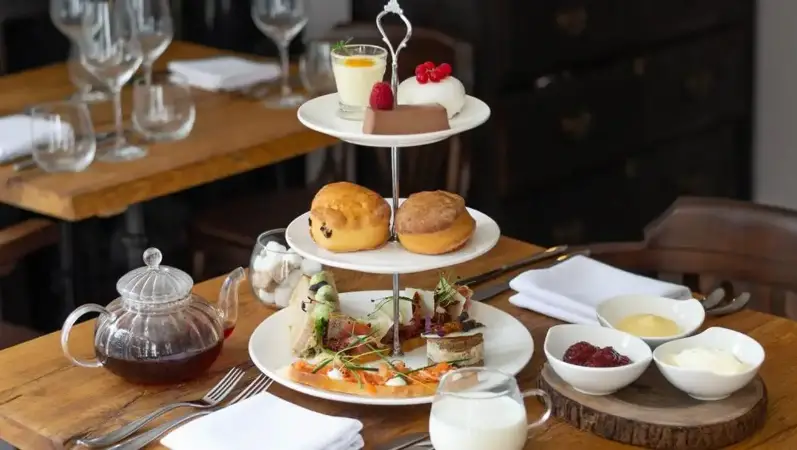



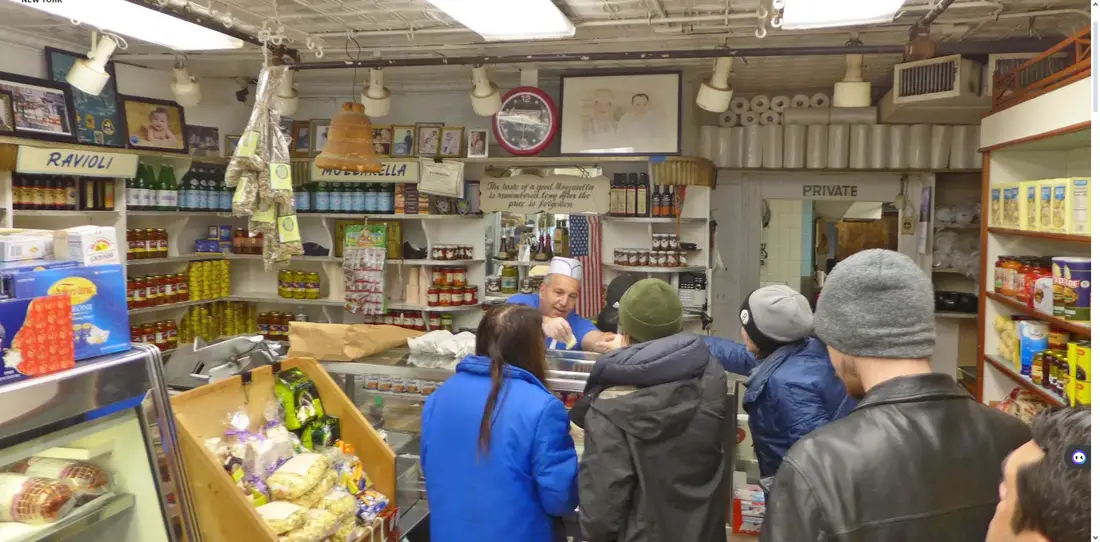







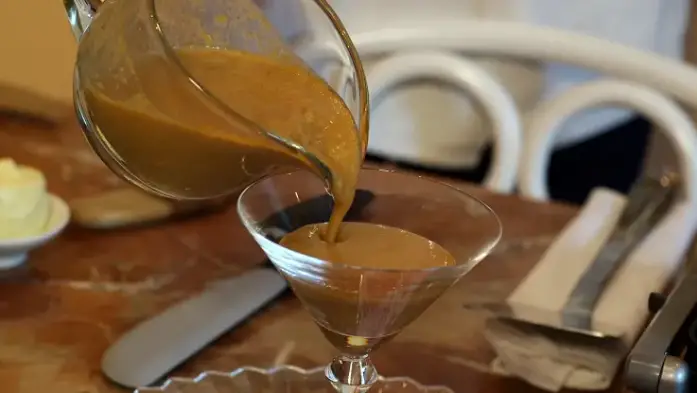





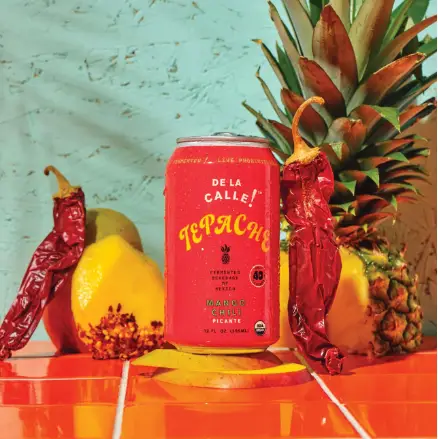

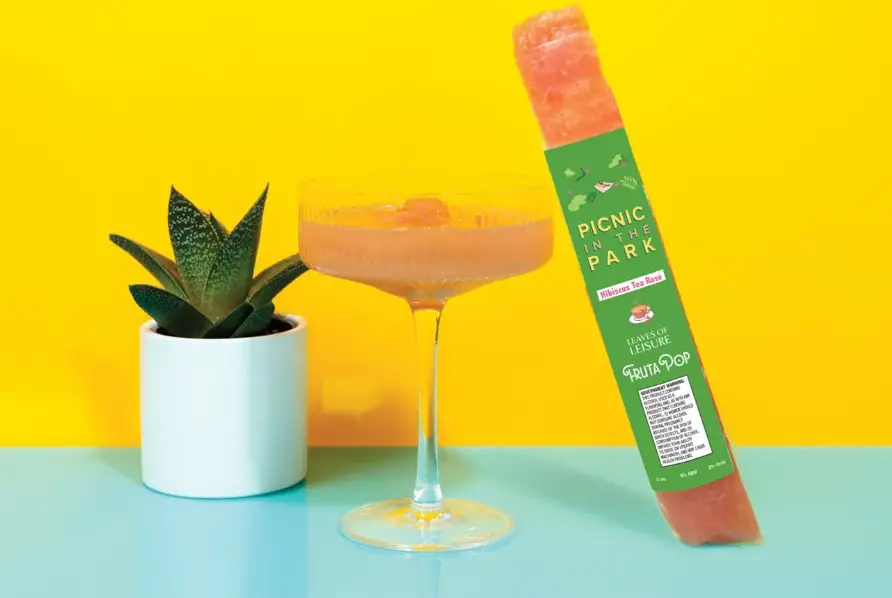


 RSS Feed
RSS Feed






